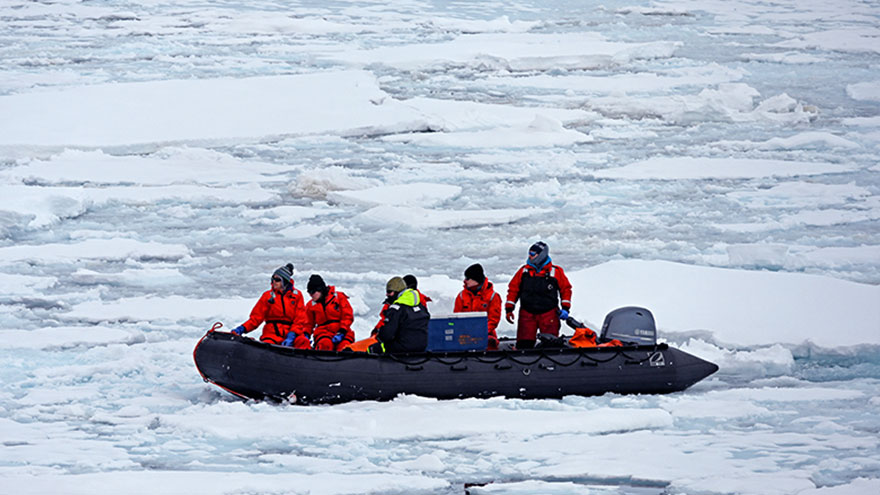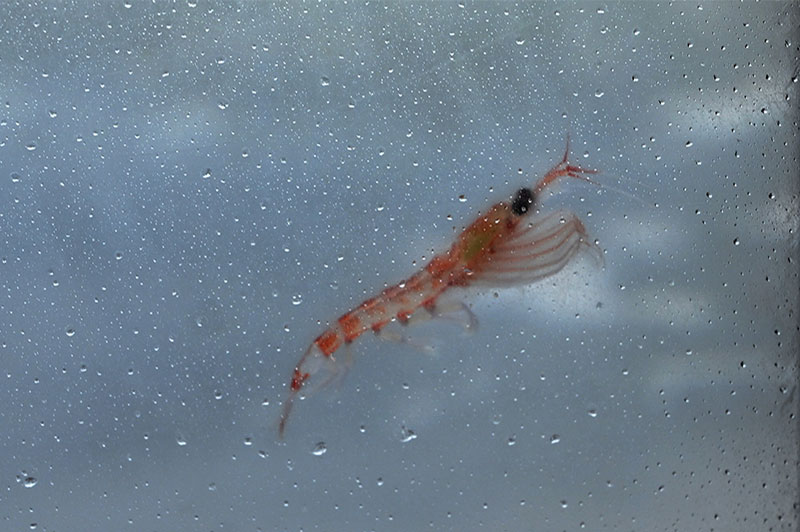Chasing Krill
December 1, 2019 | Dr. Wade Jeffrey, Director of CEDB | wjeffrey@uwf.edu

The initial plan when we left port was that the first 10 days after we arrived in the Palmer Deep area would be spent installing two high-frequency radar stations during the day and looking for krill at night. This worked great for about 2 and a half days… then the ice closed in and made it impossible to use the small boats (zodiacs and what we call the “landing craft” or what others call the “tin can.”) Here are a couple of photos of the tin can be lowered into the water as well as being loaded with gear. Zodiacs are rubber/inflatable boats – incredibly tough and durable, but they are no ice breaker…. Each of the radar stations has about 11,000 lbs of equipment (including thirty-six 97 pound batteries and solar panels) that had to be transported to the shore, then moved uphill about 200 meters. Great progress was made to get everything to shore for one station before we had to stop. We arrived back on site last night and looks like the one station on the Wauermans Islands will be completed. Here are a few photos of the cargo and the construction process. The goal was to eventually install three stations in a triangle area covering Palmer Deep. The high-frequency radar would then be able to track surface currents, which help determine where the nutrients and krill go, and subsequently the penguins. An interesting observation made about local penguin populations – this area used to be dominated by Adelie penguins but with the significant climate change in the area, the Adelie population has plummeted and the Gentoo penguin population has flourished. It is thought that the Gentoos are more adaptable to the changing environment while the Adelies are not doing so well.
At night, the plan was to use an echo sounder called the EK-60 to look for large populations of krill (we have had friendly debates about what you call the bunch of krill…. A swarm? a flock? A gaggle? A murder? Or maybe just a bucket-ton). Here is a photo of a krill swimming in one of our deck incubators. Once we found these swarms of krill we would use a towed net to collect them. Owing to the ice conditions, we only tried once (see photo) – while we did end up with a lot of krill, it’s because they are feeding on the bottom of the 2500 lbs of ice that got caught in the net. Fortunately, the marine technicians, with a little creativity, we're able to get the net back on board the ship without any damage. It turns out that the sea ice project on board (Dr. Jodi Young of University of Washington, or “yew dub”) and the krill project collide.








